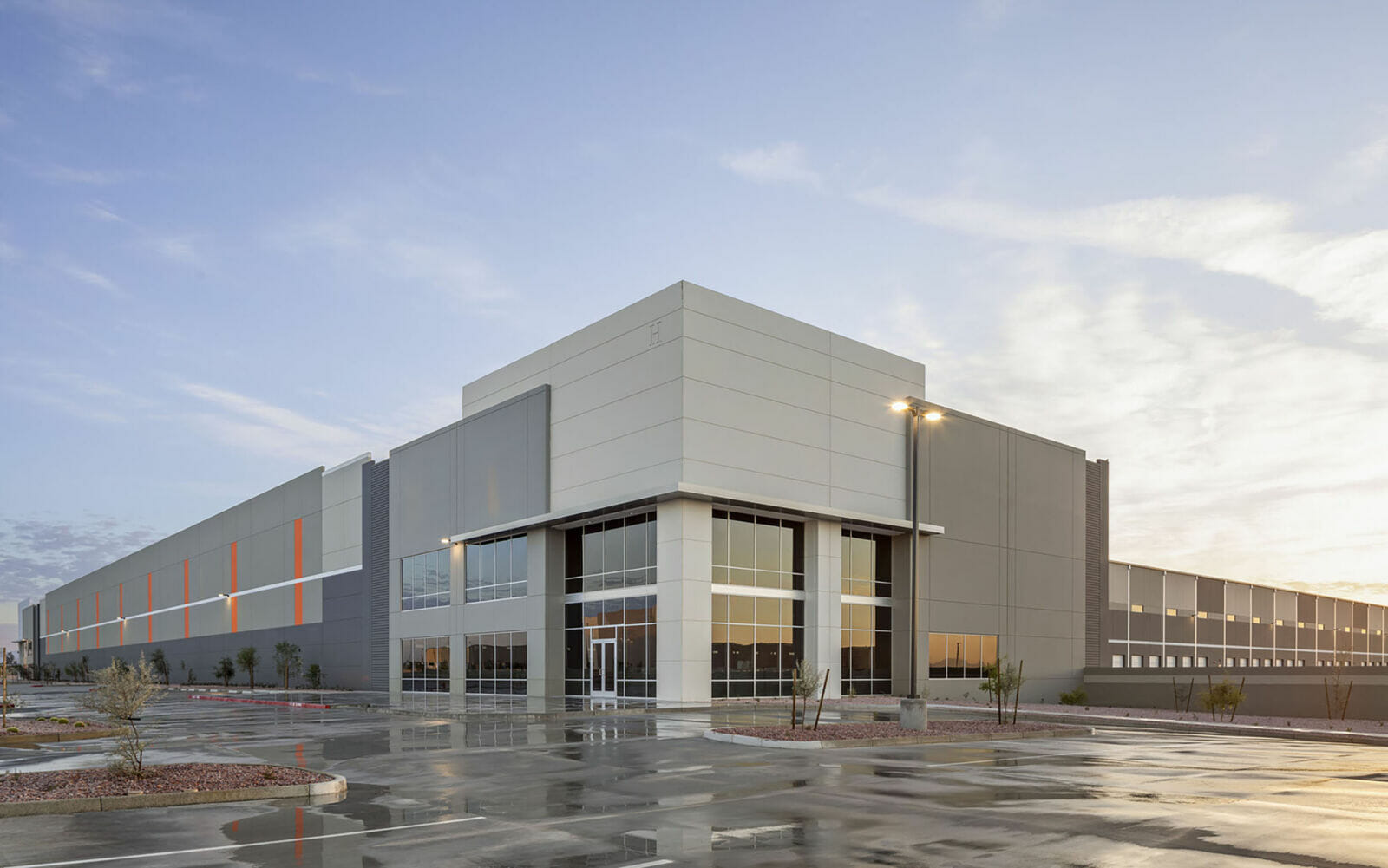Located in Glendale’s New Frontier District, G303 holds the distinction of being Hine’s largest single-building industrial development, boasting a 1.25 million-square-foot space with 40-foot clear heights. Chinese mattress manufacturer MLILY recently signed a lease committing to the full square footage. James Ni, founder and CEO of MLILY, says that expanding into Arizona is an important step in the company’s overall U.S. growth strategy.
“Despite already opening a factory in Phoenix in 2020, MLILY did not automatically commit to further expansion in the area’s market simply because they already had one factory there. Starting in December 2020, Colliers helped MLILY consider options for a new factory in Texas, South Carolina and California, as well as Arizona,” says Yang Chen, managing director for Colliers Asia Pacific. “After careful consideration, MLILY chose Phoenix once again as its best overall option and is proud to add an estimated 750 to 1,000 jobs to the Phoenix market.”
READ ALSO: Loop 303 corridor becomes global center for development
Payson McWilliam, executive vice president with Colliers in Arizona, adds, “After opening its first facility in Goodyear, MLILY needed an additional million square feet. That wasn’t available in Goodyear, so we moved to Glendale for the second deal,” he says.
At the time, phase one of G303 had finished, meaning that approximately 570,000 square feet of space was ready to lease.
“We were able to negotiate a deal to have the planned second phase of the project connect to the first as a single structure,” McWilliam notes.
Flexible space
The G303 facility was designed with adaptability in mind. Courtney Schneider, director of industrial development for Hines in Colorado and Arizona, explains that a survey of the industrial market in late 2019 identified a gap in the 500,000-square-foot to 600,000-square-foot range. That knowledge influenced the design of G303.
“We decided with how the site laid out to do twin buildings that are 570,000 square feet each,” Schneider recalls. “During phase one, we knew there was the potential to expand the space, so we designed our construction schedule and tilt walls to accommodate that in case we were able to secure a lease during that period.”
“The flexibility paid off for us with this MLILY deal,” Schneider continues. “Now, we will demolish the east wall of the building and expand into the 1.25 million-square-foot footprint that MLILY will ultimately occupy.”
The G303 development was attractive to MLILY because phase one was already complete and could remain operational while the rest of construction was underway.
“We had negotiations with competitors of G303, but Hines having the first phase done and ready to go was a huge advantage,” Chen explains. “Timing is everything in manufacturing, especially in the furniture, memory foam and mattress production world where the demand is high and supply is lagging.”
Bill Honsaker, managing director at JLL, says that two structures that can be combined is becoming a popular configuration for developers. “This approach takes some of the risk out of constructing 1.2 million square feet all at once. You might end up having to cut a big facility into multiple tenants, but this way you have two individual buildings in which tenants can have their own identity, space and secured truck courts — or the two can be combined into a single larger asset.”
Taller clear heights are also in demand, Honsaker says. “The cubic area inside the building is being expanded by going vertical,” he explains. “Virtually every structure that is a half million square feet or larger now has a minimum clear height of 40 feet, whereas in the past it was 32 feet or 36 feet. Not only are the footprints of these facilities expansive, but users are taking advantage of the ability to put an additional row of racking or a mezzanine in the building.”
International deal-making
Finalizing any business transaction can be difficult, but negotiating across international borders adds layers of complexity that domestic deals don’t possess. Having representatives on all sides of the deal who understand the intricacies of foreign and domestic business culture reduces ambiguity and possible misinterpretation.
“Because MLILY is a Chinese entity, we were dealing with time zone and language differences,” Honsaker remarks. “We were having early morning calls here, and it would be 11 p.m. in China. The language barrier meant we required a translator, and we needed someone who not only spoke Mandarin but also understood real estate and the technical aspects of construction.”
“Significant cultural differences in business practices exist between our two countries,” Chen says. “This required the involvement of individuals like myself who are not only bilingual but also bicultural and can help provide live interpretation and guidance to help both sides understand one another on a deeper level.” She adds that the well-publicized political disagreements between the Chinese and U.S. governments had the potential to create mistrust between the two sides.
Chen believes that this deal is an inspiring example of how business can bring people together from around the world, even under adverse conditions. “The pandemic has restricted travel from China, meaning that the landlord and tenant teams were unable to conduct any in-person meetings during the entire negotiation process. They still have not met each other in person,” she notes.
Despite the hurdles, both parties were able to come to a mutually beneficial agreement. “We negotiated a complex deal and lease with MLILY in about two months with cultural, language and time barriers to overcome,” Schneider recalls.
Honsaker concludes, “While the pandemic has been devastating to many business sectors, it’s been a great time to be an industrial broker. Barring any massive geopolitical meltdown, there’s nothing on the horizon indicating that the industry is going to slow down in the foreseeable future.”




